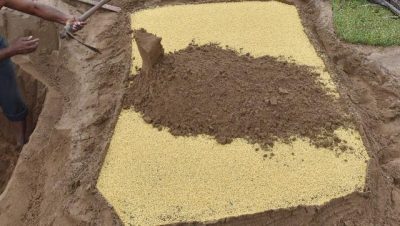4th September, 2016

A team of researchers from Chongqing Jiaotong University has developed a paste made of plant cellulose that, when added to sand, helps it retains water, nutrients and air.
A 1.6-hectare sandy plot in Ulan Buh Desert in Inner Mongolia Autonomous Region, north China, has been transformed into fertile land, yielding rice, corn, tomatoes, watermelon and sunflowers, after being treated by the new method.
A forthcoming issue of the English-language journal “Engineering,” published by the Chinese Academy of Engineering (CAE), will publish the research by the Chongqing scientists Yi Zhijian and co-author Zhao Chaohua.
The new method will hopefully help turn desert areas into an ideal habitat for plants, said Yi.
The plants in the sandy test plot needed about the same amount of water as those grown in regular soil, but required less fertilizer and bore higher yields, according to estimates by experts.
Since 2013, scientists have been experimenting with outdoor cultivation at two sites with areas of approximately 550 and 420 square meters in Chongqing, where scientists simulated desert landform conditions.
The plants have survived the heavy rain and high temperatures, the typical climate conditions in Chongqing.
The crops, including rice, corn and potatoes, flourished in the newly converted soil, according to the scientists.
To verify the method, a large-scale planting experiment in Ulan Buh Desert began in April this year. There is very little rain fall in the area.
The converted sand has proved to be an ideal habitat for plant species with a strong resistance to wind erosion, according to the research findings.
The paste is non-toxic, environmentally friendly, cheap, and suitable for mass production, they said.
Enabling plants to thrive in deserts just like in soil is a major breakthrough said, Li Jia’na, with the China Agro-technological Extension Association.
The new method is an important breakthrough in combating desertification and may prove fundamental in transforming deserts into fertile, arable land, said Zhong Zhihua, an academic with the CAE.
Desert control is a global challenge. If the sand conversion method could be used on a large-scale for agriculture it could help address several environmental problems, such as deforestation, bio-diversity loss and climate change, the paper said.
Large-scale desert control through the sand-to-soil conversion “must take into consideration the risks of excessive or undue exploitation of underground water resources,” the paper said.
Before the large-scale application, planning and assessment must be carried out, and this might start in areas with access to adequate water resources, the paper added.


